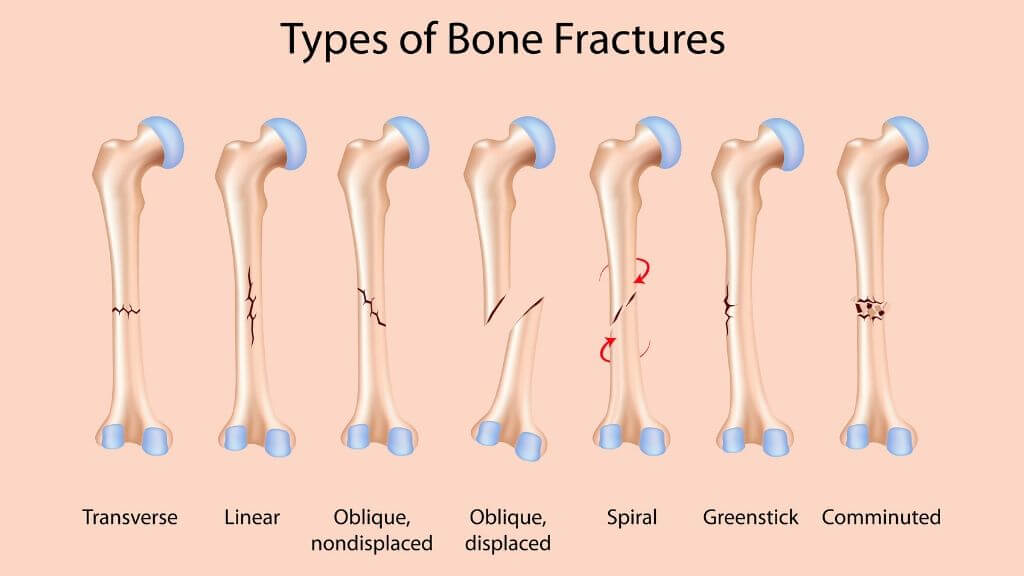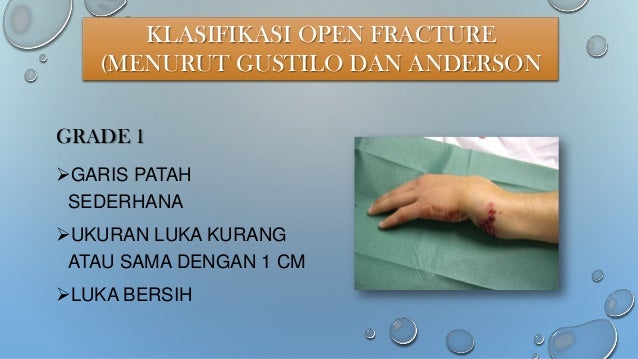

Definitive internal stabilisation should only be carried out when it can be immediately followed with definitive soft tissue cover.Definitive soft tissue closure or coverage should be achieved within 72 hours of injury if it cannot be performed at the time of debridement.there should be fresh instruments and a re-prep and drape of the limb before proceeding. Once debridement is complete any further procedures carried out at that same sitting should be regarded as clean surgery i.e.within 24 hours of injury for all other low energy open fractures. within 12 hours of injury for other solitary high energy open fractures. Immediately for highly contaminated wounds (agricultural, aquatic, sewage) or when there is an associated vascular compromise (compartment syndrome or arterial disruption producing ischaemia). Debridement should be performed using fasciotomy lines for wound extension where possible (see overleaf for recommended incisions for fasciotomies of the leg).The formation of the management plan for fixation and coverage of open fractures and surgery for initial debridement should be undertaken concurrently by consultants in orthopaedic and plastic surgery (a combined orthoplastic approach).These should be kept in the patient’s records.

Photographs of open fracture wounds should be taken when they are first exposed for clinical care, before debridement and at other key stages of management.All trauma networks must have information governance policies in place that enable staff to take, use and store photographs of open fracture wounds for clinical decision-making 24 hours a day.‘Mini-washouts’ outside the operating theatre environment are not indicated. Prior to formal debridement the wound should be handled only to remove gross contamination and to allow photography, then dressed with a saline-soaked gauze and covered with an occlusive film.There should be a local policy on the inclusion of angiography in any extremity CT related to open fractures. This should be used with clinical correlation to direct further specific limb sequences during that initial CT examination. The initial sequence should include a head to toes scanogram. In patients where an initial “Trauma CT” is indicated there should be protocols to maximise the useful information and minimise delay:.Patients presenting with arterial injuries in association with their fracture should be treated in accordance with the BOAST for arterial injuries.The limb should be re-aligned and splinted.Management of suspected compartment syndrome should follow BOAST guidelines. This should be repeated systematically, particularly after reduction manoeuvres or the application of splints. The examination of the injured limb should include assessment and documentation of the vascular and neurological status.There should be a readily accessible published network guideline for the use of antibiotics in open fractures.Intravenous prophylactic antibiotics should be administered as soon as possible, ideally within 1 hour of injury.Patients with hand, wrist, forefoot or digit injuries may be managed locally following similar principles. Patients with open fractures of long bones, hind foot or midfoot should be taken directly or transferred to a specialist centre that can provide Orthoplastic* care.Inclusions:Īll patients with open fractures of long bones, hind foot or midfoot (excluding hand, wrist, forefoot or digit). Trauma networks and hospitals require the appropriate pathways and infrastructure, to manage these patients, to enable optimum recovery and to minimise the risk of infection. The consequences of infection, can be great both for the individual patient and the community. It is appropriate to use initial evaluation and treatment suffix “A” when the patient has been transferred from another facility to a higher level trauma facility for active management of the fracture.įor additional information on ICD-10 coding for emergency medicine, visit the ACEP Reimbursement page.Open fractures may require timely multidisciplinary management. Initial care 7 th character codes “A” (closed fracture) or “B” (open fracture Gustilo Type I or II, or unspecified) or “C” (open fracture Gustilo Type IIIA, IIIB, or IIIC) indicate the patient is receiving active treatment for the fracture. Multiple fractures are sequenced by the severity of the fracture.If the description does not specify the type of open fracture, the coder will default to Type I/II.If the description does not specify displaced or non-displaced, the coder will default to displaced.



 0 kommentar(er)
0 kommentar(er)
